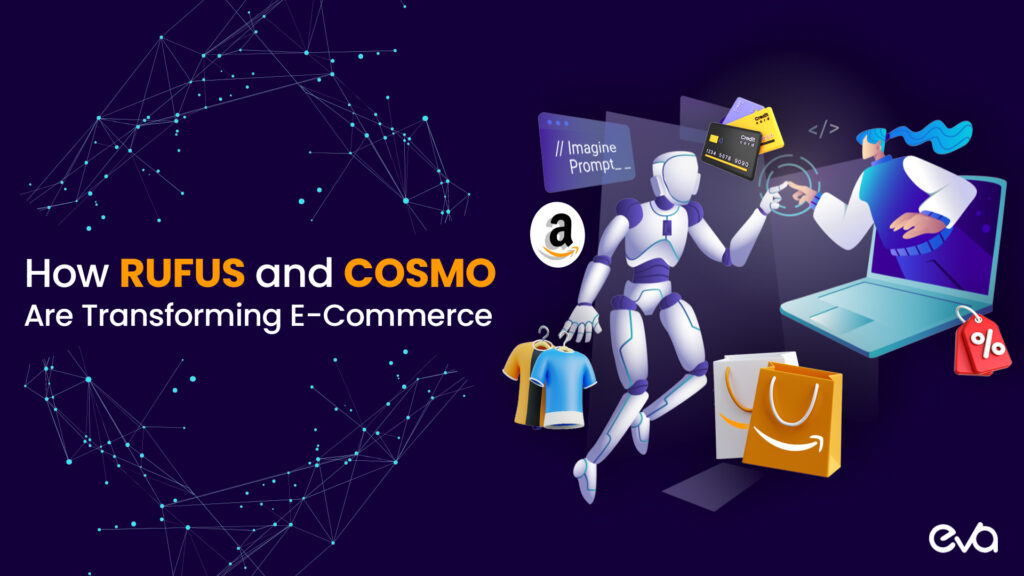Table of Contents
- Introduction
- Overview of Amazon’s AI Developments
- The Role of RUFUS and COSMO in Enhancing the Shopping Experience
- RUFUS: Amazon’s New Shopping Assistant
- How RUFUS Personalizes the Shopping Journey
- Integration of RUFUS Across SERPs and PDPs
- COSMO: A Game-Changer for Amazon’s Search Algorithm
- How COSMO Leverages Common Sense Knowledge
- How COSMO Works
- The Impact on Amazon Organic Search
- The Evolving Role of Keywords and SEO
- Preparing for COSMO: What Brands Should Do
- Key Takeaways for Brands
- The Future of AI in E-Commerce
- How Eva Can Help
- FAQ
Introduction
As the world’s leading e-commerce platform, Amazon is constantly innovating to enhance the shopping experience for its millions of users.
At the forefront of these innovations are two groundbreaking AI tools, RUFUS and COSMO, which are revolutionizing how customers find products and interact with the platform.
Overview of Amazon’s AI Developments
Amazon’s commitment to integrating artificial intelligence into its operations has led to the creation of sophisticated tools designed to streamline and personalize the shopping experience.
These developments are not merely incremental improvements but transformative changes that set new standards for the industry.
Significance of AI in E-Commerce
Artificial intelligence is reshaping e-commerce by providing more accurate search results, personalized recommendations, and efficient inventory management.
AI helps businesses understand consumer behavior better, predict trends, and optimize pricing strategies, ultimately leading to increased customer satisfaction and higher sales.
The Role of RUFUS and COSMO in Enhancing the Shopping Experience
RUFUS and COSMO are at the forefront of Amazon’s AI advancements.
RUFUS, an intelligent search algorithm, significantly improves search accuracy by understanding the context and intent behind customer queries.
This leads to more relevant product suggestions, reducing the time customers spend searching and increasing the likelihood of purchase.
COSMO, on the other hand, enhances the visual aspect of the shopping experience. It uses advanced image recognition technology to recommend products based on visual similarities.
This feature is particularly beneficial for customers looking for items that match a specific style or aesthetic, making their shopping journey more intuitive and enjoyable.
RUFUS: Amazon’s New Shopping Assistant
Features and Functionality of RUFUS
RUFUS, Amazon’s cutting-edge shopping assistant, is designed to revolutionize how users interact with the platform. Here are some of its standout features:
- Contextual Understanding: RUFUS leverages natural language processing (NLP) to comprehend the context and intent behind search queries, ensuring highly relevant search results.
- Real-time Suggestions: As users type, RUFUS offers real-time suggestions that are refined based on the user’s browsing history and preferences.
- Voice Search Capability: Integrated with Alexa, RUFUS supports voice search, making it easier for users to find products hands-free.
- Advanced Filtering: RUFUS provides advanced filtering options, allowing users to narrow down search results based on specific attributes like brand, price range, customer ratings, and more.
- Visual Search: Users can upload images, and RUFUS will identify and suggest visually similar products available on Amazon.
How RUFUS Personalizes the Shopping Journey
RUFUS personalizes the shopping experience by leveraging data and machine learning algorithms to tailor the journey to individual users.
Here’s how:
- User Profiles: By analyzing user profiles, purchase history, and browsing behavior, RUFUS curates personalized recommendations that match individual preferences.
- Dynamic Content: The search results and product pages are dynamically adjusted based on the user’s previous interactions, ensuring the most relevant products are prominently displayed.
- Predictive Analytics: RUFUS uses predictive analytics to anticipate user needs and suggest products even before a search query is fully entered, based on patterns in user behavior.
- Customized Promotions: Personalized promotions and discounts are presented to users, enhancing their likelihood of making a purchase.
Integration of RUFUS Across SERPs and PDPs
RUFUS is seamlessly integrated across Search Engine Results Pages (SERPs) and Product Detail Pages (PDPs), enhancing user experience at every step:
- SERPs: On the search results page, RUFUS refines the displayed results by understanding the user’s intent and providing the most relevant product options. The assistant’s real-time suggestions and filtering capabilities are prominently featured, making it easier for users to find what they’re looking for.
- PDPs: On product detail pages, RUFUS enhances the information presented to users. It suggests complementary products, provides alternative options, and highlights personalized content like user reviews that match the shopper’s profile. This integration ensures a cohesive and engaging shopping journey, from the initial search to the final purchase.
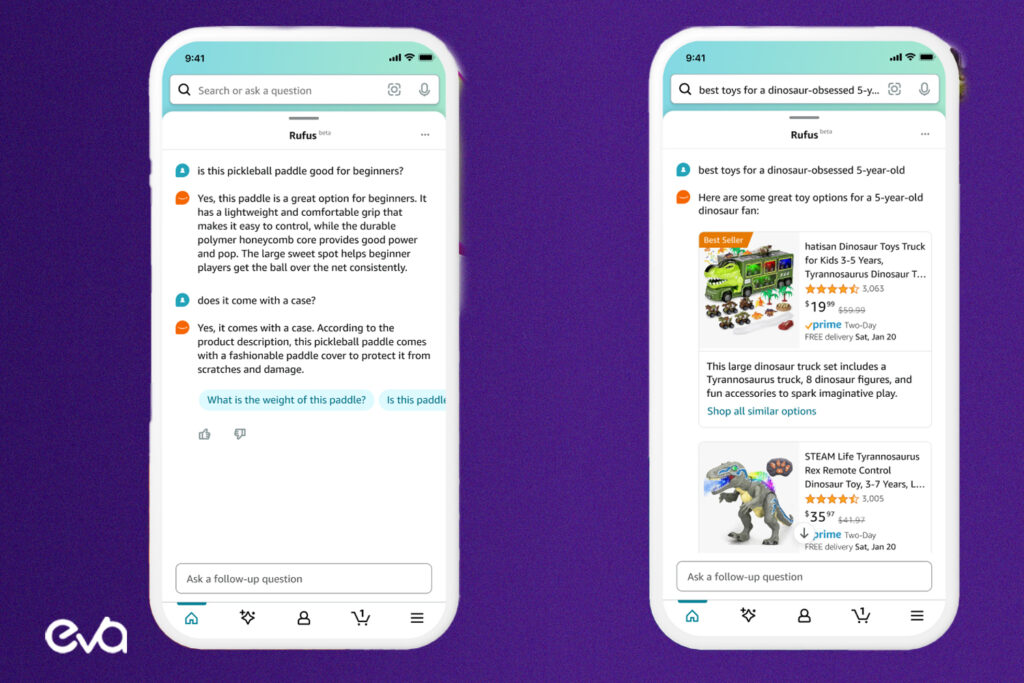
COSMO: A Game-Changer for Amazon’s Search Algorithm
Introduction to COSMO and Its Purpose
COSMO represents a significant leap forward in Amazon’s search technology.
Unlike traditional search algorithms that rely solely on keyword matching and product attributes, COSMO introduces a sophisticated understanding of context and user intent.
Its primary purpose is to make the shopping experience more intuitive and personalized by leveraging advanced artificial intelligence to interpret and respond to nuanced customer queries.
How COSMO Leverages Common Sense Knowledge
COSMO is designed to understand and apply common sense knowledge in ways that traditional search algorithms cannot. Here’s how it works:
- Contextual Awareness: COSMO interprets the context of search queries to deliver more accurate results. For example, if a user searches for “warm jackets for hiking in winter,” COSMO understands the specific need for warmth and suitability for hiking, not just any jacket.
- Semantic Understanding: It goes beyond keyword matching by understanding the semantics of queries. This means COSMO can distinguish between different meanings of the same word based on the context, providing more relevant search results.
- Learning from Interactions: COSMO continually learns from user interactions. It refines its understanding of common sense knowledge by analyzing patterns in how users phrase queries and what results they click on, ensuring its recommendations become increasingly accurate over time.
The Shift from Product-Centric to Customer-Focused Search
COSMO marks a paradigm shift in Amazon’s search functionality, moving from a product-centric to a customer-focused approach. Here’s what this transformation entails:
- Holistic Understanding of Needs: Instead of focusing solely on product attributes, COSMO considers the broader context of the customer’s needs. This approach ensures that search results are not only relevant but also tailored to individual preferences and circumstances.
- Enhanced Personalization: By leveraging customer data, including past purchases and browsing behavior, COSMO delivers highly personalized search results. This means users see products that are most likely to meet their specific needs and preferences.
- Improved User Experience: The customer-focused approach simplifies the shopping journey. Users spend less time filtering through irrelevant products and more time exploring items that genuinely match their interests. This not only enhances satisfaction but also boosts conversion rates as customers are more likely to find and purchase products that meet their needs.

How COSMO Works
COSMO operates through a meticulously designed workflow that ensures search queries are handled with precision and intelligence. Here’s a breakdown of COSMO’s workflow:
- Query Interpretation: When a user enters a search query, COSMO begins by interpreting the intent behind the words. It uses natural language processing (NLP) to understand the nuances and context of the query.
- Contextual Analysis: COSMO analyzes the context of the search by considering factors such as user history, location, and current trends. This helps in delivering more relevant results.
- Knowledge Graph Integration: COSMO leverages industry-scale knowledge graphs to map relationships between different entities, enhancing its understanding of the query.
- Result Generation: Based on the interpreted query and contextual analysis, COSMO retrieves the most relevant products from Amazon’s vast inventory. It prioritizes results that best match the user’s intent.
- Continuous Learning: COSMO continuously learns from user interactions, refining its algorithms and improving the accuracy of future search results.
Use of Industry-Scale Knowledge Graphs
Knowledge graphs are a crucial component of COSMO’s functionality. These graphs are extensive networks of interconnected data points that represent relationships between various entities, such as products, categories, and user preferences.
Here’s how COSMO utilizes these graphs:
- Semantic Relationships: Knowledge graphs enable COSMO to understand semantic relationships between different terms and concepts. For example, it knows that “running shoes” and “athletic footwear” refer to similar products.
- Entity Recognition: By recognizing entities within a search query, COSMO can provide more precise results. For instance, if a user searches for “Bluetooth headphones under $50,” COSMO identifies “Bluetooth headphones” as the product and “under $50” as the price range.
- Enhanced Recommendations: Knowledge graphs help COSMO suggest related products that users might be interested in based on their search history and preferences.
Enhancing Search Relevance Through Customer Intent
COSMO’s ability to understand and act on customer intent sets it apart from traditional search algorithms. Here’s how it enhances search relevance:
- Intent Recognition: COSMO goes beyond simple keyword matching by recognizing the underlying intent of the user. For example, a search for “best laptop for gaming” prompts COSMO to prioritize high-performance laptops designed for gaming.
- Contextual Relevance: By considering the context of the search, such as time of year or recent trends, COSMO ensures that the results are timely and relevant. For instance, a search for “Christmas gifts” in November will yield different results than the same search in July.
- Personalized Results: COSMO uses data from previous searches and purchases to tailor results to individual users. This means that two users searching for the same term may receive different results based on their unique preferences and behaviors.
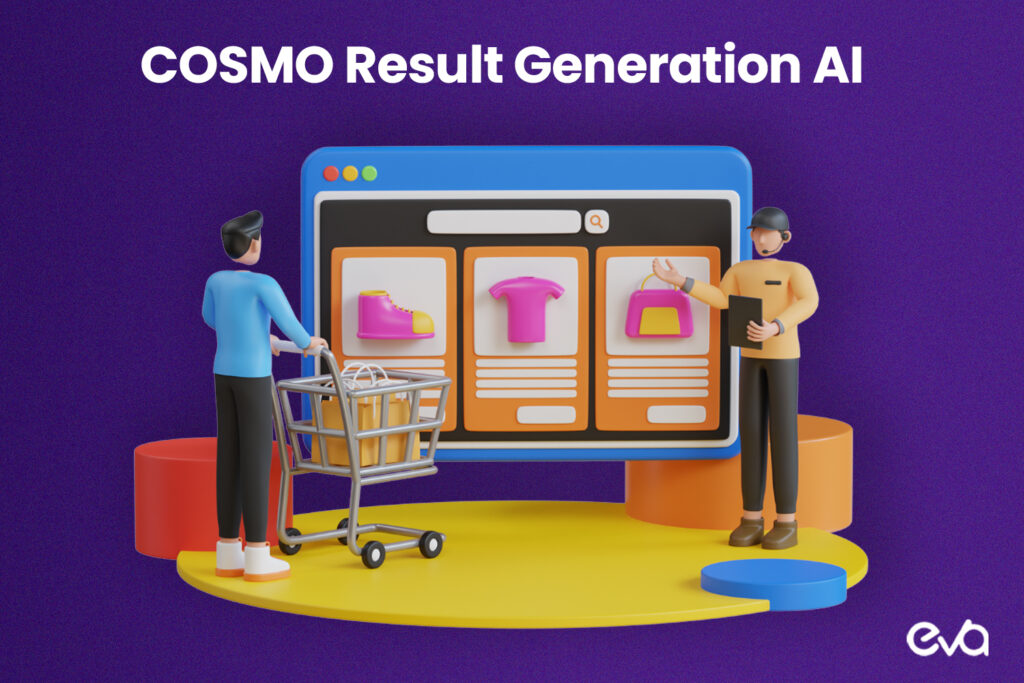
The Impact on Amazon Organic Search
Changes to the A9 Algorithm and Search Navigation
The introduction of RUFUS and COSMO has led to significant changes in Amazon’s A9 search algorithm, which is the backbone of the platform’s search functionality.
Here’s how these changes have impacted organic search:
- Enhanced Relevance: The A9 algorithm now places greater emphasis on relevance by incorporating advanced AI capabilities from RUFUS and COSMO. This means that search results are more accurately tailored to what users are actually looking for.
- Contextual Understanding: With COSMO’s integration, the A9 algorithm better understands the context behind search queries. This allows for more nuanced and precise search results that align with user intent.
- Dynamic Adjustments: The algorithm dynamically adjusts search rankings based on real-time data and user interactions. This continuous learning process ensures that the most relevant and popular products are given priority in search results.
The Role of Customer Intent in Search Rankings
Customer intent has become a crucial factor in determining search rankings on Amazon. Here’s how it plays a role:
- Query Interpretation: The A9 algorithm, enhanced by COSMO, interprets the intent behind user queries. For instance, a search for “eco-friendly cleaning products” triggers the algorithm to prioritize products that are genuinely environmentally friendly, even if they don’t have exact keyword matches.
- Personalized Search Results: By analyzing user behavior, such as past purchases and browsing history, the algorithm delivers personalized search results that align with individual preferences and needs. This personalization increases the likelihood of conversion.
- Behavioral Data Integration: Customer intent is inferred from behavioral data, such as click-through rates, time spent on product pages, and purchase history. This data-driven approach ensures that search rankings reflect what users are most interested in.
Improvements in Navigation Engagement Rates
The enhancements brought by RUFUS and COSMO have led to significant improvements in navigation engagement rates. Here’s how:
- Streamlined Search Process: With more relevant and accurate search results, users spend less time filtering through irrelevant products. This streamlined process increases user satisfaction and engagement.
- Increased Click-Through Rates: Personalized and contextually relevant search results lead to higher click-through rates. Users are more likely to click on products that closely match their search intent.
- Reduced Bounce Rates: When users find what they are looking for quickly and efficiently, bounce rates decrease. This means users stay longer on the platform, exploring more products and making more purchases.
- Enhanced User Experience: The overall shopping experience is improved with intuitive navigation and highly relevant search results. This leads to higher engagement levels as users find the platform more user-friendly and effective in meeting their needs.
The impact of these changes on Amazon’s organic search is profound, resulting in a more engaging and efficient shopping experience for users.
The combination of RUFUS and COSMO’s capabilities ensures that search results are not only accurate but also aligned with the evolving needs and preferences of customers.
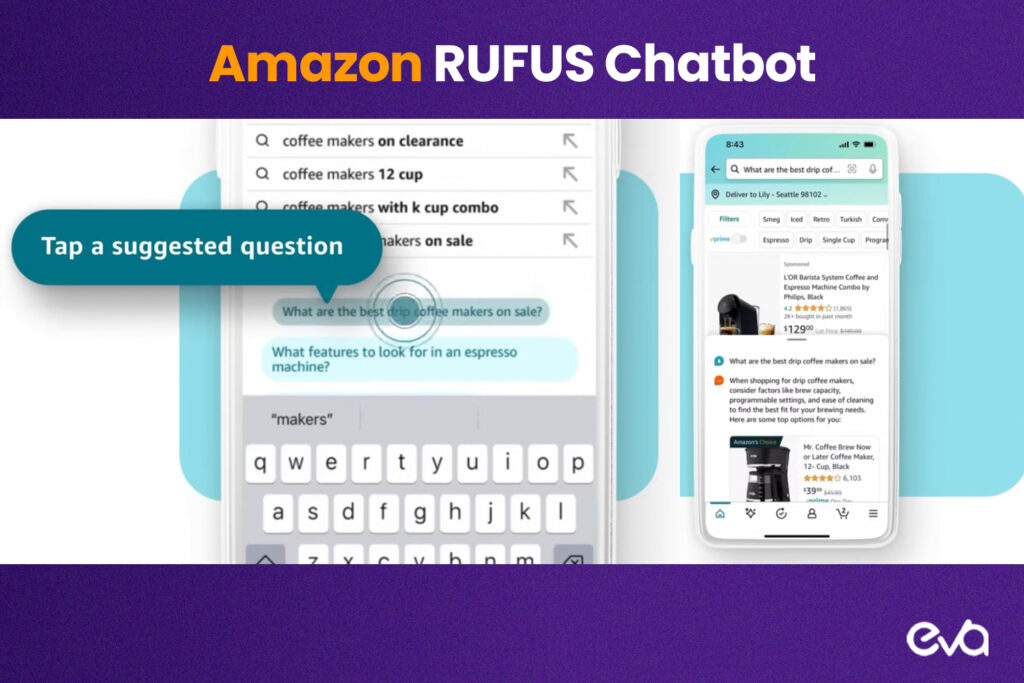
The Evolving Role of Keywords and SEO
Transition from Keyword Focus to Customer Intent
The integration of RUFUS and COSMO into Amazon’s search ecosystem has fundamentally shifted the role of keywords in SEO.
Traditionally, SEO strategies relied heavily on keyword optimization, where specific terms and phrases were used to rank higher in search results.
However, with the advent of advanced AI technologies, the focus has transitioned to understanding and leveraging customer intent.
- Beyond Keywords: Instead of merely matching keywords, the new AI-driven approach interprets the intent behind user queries. For example, a search for “best affordable smartphones for photography” is understood in context, and results are tailored to showcase budget-friendly smartphones with excellent camera capabilities, even if those exact keywords are not present.
- Semantic Search: COSMO’s ability to grasp semantic relationships means it can deliver relevant results based on the meaning and context of the search terms. This shift ensures that search results are more aligned with what users are actually seeking.
The Importance of Persona and Shopper Research
Understanding customer personas and conducting thorough shopper research have become critical components of effective SEO strategies. Here’s why:
- Personalization: Knowing the demographics, preferences, and behaviors of your target audience allows for more personalized and relevant content. This personalization enhances user engagement and satisfaction.
- Targeted Content: By developing detailed customer personas, businesses can create content that addresses specific needs and pain points. This targeted approach increases the likelihood of conversions and builds stronger customer relationships.
- Behavioral Insights: Shopper research provides insights into how different segments of customers interact with the platform. These insights help in tailoring SEO strategies to meet the unique needs of various customer groups.
Integrating Audience Behavior into SEO Strategies
Integrating audience behavior into SEO strategies ensures that search results are not only relevant but also engaging and effective in driving conversions. Here’s how this integration works:
- Behavioral Analytics: Analyzing user behavior, such as click-through rates, time spent on pages, and purchase patterns, helps in understanding what resonates with the audience. This data-driven approach allows for continuous optimization of content and SEO strategies.
- Dynamic Adjustments: SEO strategies need to be flexible and adaptive, responding to changes in audience behavior. For instance, if a particular product category sees increased interest, the SEO strategy should prioritize optimizing content for that category.
- Feedback Loops: Creating feedback loops where user behavior data is continually analyzed and used to refine SEO strategies is essential. This iterative process ensures that SEO efforts remain aligned with evolving customer preferences and market trends.
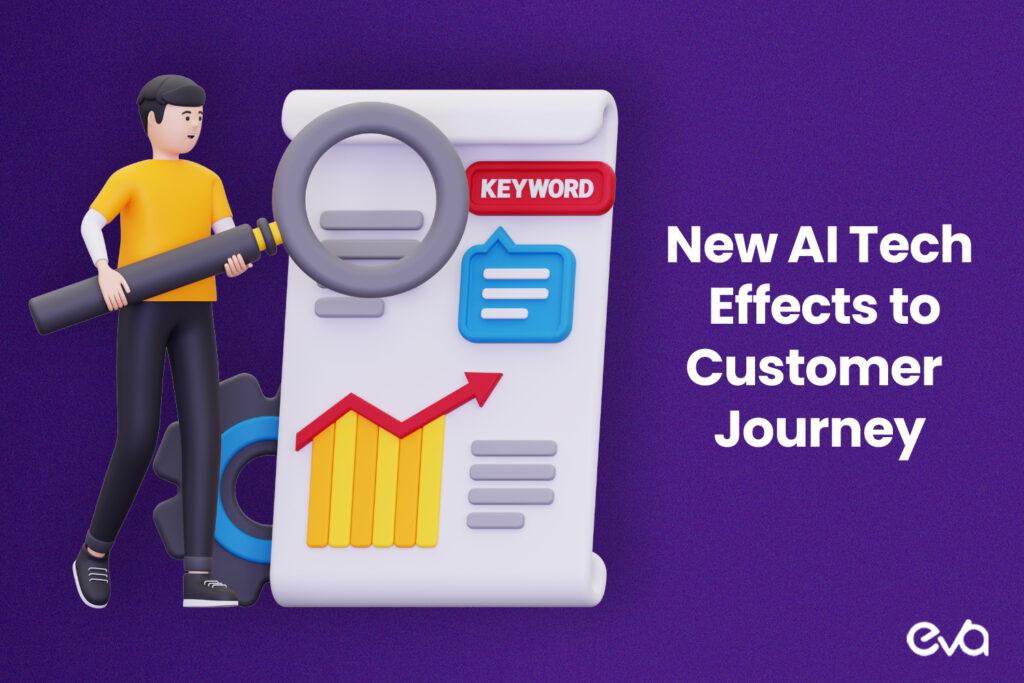
Preparing for COSMO: What Brands Should Do
Optimizing Product Detail Pages (PDPs) for COSMO
To fully leverage the capabilities of COSMO, brands must ensure their Product Detail Pages (PDPs) are optimized to provide the best possible user experience.
Here are key strategies for optimizing PDPs for COSMO:
- High-Quality Images: Since COSMO uses advanced image recognition, it’s crucial to include high-resolution images that showcase the product from multiple angles. Images should highlight key features and benefits, making it easier for COSMO to match products with relevant search queries.
- Descriptive Titles and Bullet Points: Use clear, concise, and informative titles that accurately describe the product. Bullet points should summarize the main features and benefits, making it easy for COSMO to understand and present relevant information to users.
- Detailed Descriptions: Provide comprehensive product descriptions that go beyond basic features. Include information on use cases, benefits, and unique selling points. This helps COSMO to better match the product with user intents and queries.
Importance of Completing Product Attributes
Completing all relevant product attributes is essential for ensuring COSMO can accurately index and recommend products. Here’s why it’s important:
- Enhanced Searchability: Detailed product attributes allow COSMO to more effectively categorize and match products with user queries. Attributes such as size, color, material, and technical specifications should be thoroughly completed.
- Improved Filtering: Users often rely on filters to narrow down search results. Complete product attributes ensure that your products appear in the filtered results, increasing visibility and the likelihood of purchase.
- Accurate Recommendations: COSMO uses product attributes to generate personalized recommendations. The more detailed and accurate the attributes, the better COSMO can tailor its suggestions to individual user preferences.
Leveraging Customer Feedback and Reviews
Customer feedback and reviews play a pivotal role in optimizing your products for COSMO. Here’s how to leverage them effectively:
- Incorporate Feedback: Regularly monitor and analyze customer reviews to identify common themes and areas for improvement. Use this feedback to enhance product descriptions, attributes, and overall quality.
- Highlight Positive Reviews: Showcase positive customer reviews prominently on your PDPs. Positive reviews not only build trust but also help COSMO understand the strengths of your product, improving its ranking and visibility.
- Address Negative Reviews: Respond to negative reviews constructively and make necessary improvements to address the issues raised. This proactive approach demonstrates a commitment to customer satisfaction and can positively influence COSMO’s perception of your product.
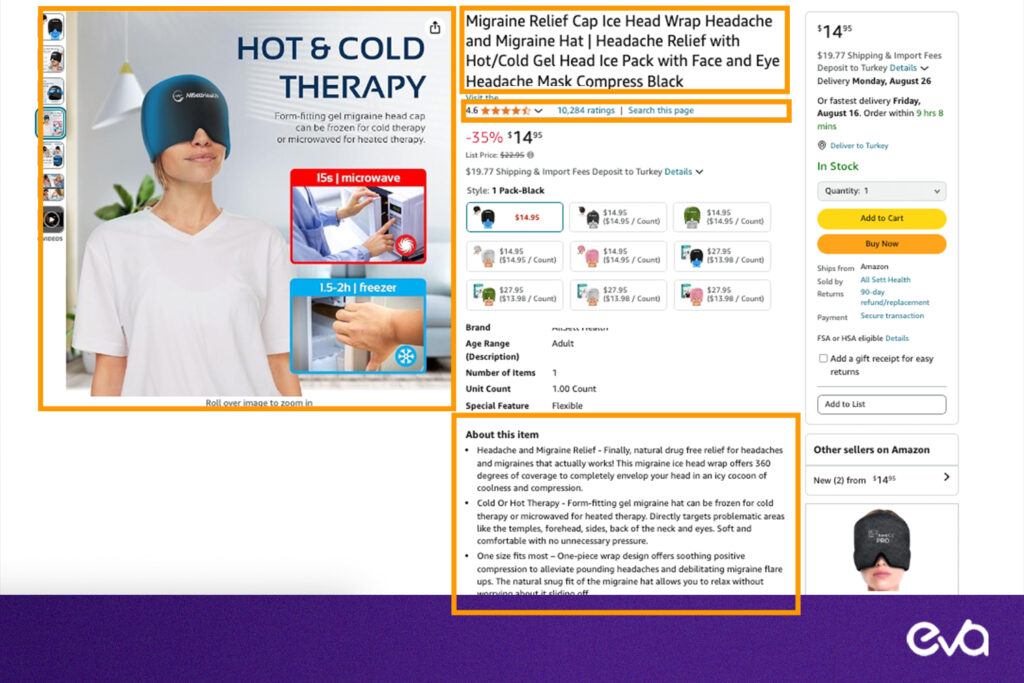
Key Takeaways for Brands
Steps to Prepare for COSMO’s Full Integration
To effectively prepare for COSMO’s full integration and maximize its benefits, brands should take the following steps:
- Optimize Product Detail Pages (PDPs): Ensure PDPs are comprehensive and visually appealing. Use high-quality images, clear and descriptive titles, detailed product descriptions, and concise bullet points to highlight key features and benefits.
- Complete Product Attributes: Fill out all relevant product attributes meticulously. This includes size, color, material, technical specifications, and any other details that can help COSMO accurately categorize and recommend your products.
- Leverage Customer Feedback: Regularly monitor and incorporate customer feedback into your product listings. Highlight positive reviews and address negative feedback to demonstrate commitment to quality and customer satisfaction.
Staying Informed About AI Advancements in E-Commerce
Keeping abreast of AI advancements is crucial for staying competitive in the ever-evolving e-commerce landscape. Here’s how brands can stay informed:
- Industry News and Blogs: Follow industry news, blogs, and publications that cover AI advancements and their impact on e-commerce. Websites like Eva.guru provide valuable insights and updates.
- Webinars and Conferences: Participate in webinars, conferences, and workshops focused on AI in e-commerce. These events offer opportunities to learn from experts and network with industry peers.
- Continuous Learning: Encourage continuous learning within your team. Invest in training programs and resources that keep your team updated on the latest AI trends and technologies.
Strategies to Align with Amazon’s Evolving Search Algorithms
Adapting to Amazon’s evolving search algorithms is essential for maintaining visibility and driving sales. Here are some strategies to align with these changes:
- Focus on Customer Intent: Shift from a keyword-centric approach to understanding and addressing customer intent. Tailor your content to meet the specific needs and preferences of your target audience.
- Utilize Behavioral Data: Leverage behavioral data to gain insights into customer preferences and trends. Use this data to optimize your product listings and marketing strategies.
- Regular Updates: Keep your product listings updated with the latest information, images, and attributes. Regularly review and refine your SEO strategies to align with changes in Amazon’s algorithms.
- Engage with Customers: Foster engagement with customers through reviews, Q&A sections, and responsive customer service. Engaged customers are more likely to leave positive reviews and contribute to higher search rankings.
Key Takeaways
- Optimize PDPs for COSMO: Enhance your Product Detail Pages with high-quality images, detailed descriptions, and complete attributes to improve search relevance and user engagement.
- Leverage Customer Feedback: Use customer reviews to refine your product listings and demonstrate a commitment to quality and satisfaction.
- Stay Informed: Keep up with AI advancements and industry trends through continuous learning, industry news, and professional events.
- Align with Evolving Algorithms: Focus on customer intent, utilize behavioral data, and regularly update your listings to stay aligned with Amazon’s search algorithms.
- Engage with Customers: Encourage customer interaction and feedback to boost your product’s visibility and credibility.

The Future of AI in E-Commerce
Predictions for AI-Driven Shopping Experiences
As AI technology continues to advance, the shopping experience is poised for significant transformation. Here are some predictions for the future of AI-driven shopping experiences:
- Hyper-Personalization: AI will enable even more personalized shopping experiences, with algorithms anticipating customer needs and preferences with unprecedented accuracy. Shoppers will receive tailored recommendations and promotions that align perfectly with their tastes and behaviors.
- Seamless Integration: AI will facilitate seamless integration across multiple platforms and devices, ensuring a consistent and cohesive shopping experience. Whether browsing on a smartphone, tablet, or desktop, customers will enjoy a unified and intuitive interface.
- Enhanced Customer Support: AI-driven chatbots and virtual assistants will become more sophisticated, providing real-time, personalized customer support. These tools will handle a wider range of inquiries and issues, improving customer satisfaction and loyalty.
Potential Challenges and Opportunities for Brands
The rise of AI in e-commerce presents both challenges and opportunities for brands. Understanding and addressing these can help businesses thrive in the evolving marketplace:
- Challenges:
- Data Privacy: As AI relies heavily on data, ensuring customer data privacy and security will be paramount. Brands must navigate regulatory requirements and build trust with customers regarding data usage.
- Adaptation and Integration: Implementing AI technologies can be complex and resource-intensive. Brands will need to invest in the right infrastructure and training to effectively integrate AI into their operations.
- Staying Competitive: As AI becomes more prevalent, staying ahead of competitors will require continuous innovation and adaptation. Brands must stay informed about the latest AI advancements and trends.
- Opportunities:
- Improved Efficiency: AI can streamline various aspects of e-commerce, from inventory management to marketing strategies, leading to greater operational efficiency and cost savings.
- Enhanced Customer Insights: AI provides deep insights into customer behavior and preferences, enabling brands to make data-driven decisions and tailor their offerings more effectively.
- New Business Models: AI opens up possibilities for new business models and revenue streams, such as personalized subscription services and AI-driven product recommendations.
The Ongoing Evolution of AI Tools in the Marketplace
The evolution of AI tools in the marketplace is an ongoing process, characterized by continuous innovation and refinement. Here’s what brands can expect:
- AI and Machine Learning Advancements: AI and machine learning algorithms will become more sophisticated, capable of processing and analyzing vast amounts of data in real-time. This will lead to even more accurate predictions and personalized experiences.
- Integration with Emerging Technologies: AI will increasingly integrate with other emerging technologies such as augmented reality (AR), virtual reality (VR), and the Internet of Things (IoT). These integrations will create immersive and interactive shopping experiences.
- Increased Accessibility: As AI tools become more advanced, they will also become more accessible to businesses of all sizes. This democratization of AI technology will enable smaller brands to compete with larger players in the market.
The future of AI in e-commerce is bright, with endless possibilities for enhancing the shopping experience and driving business growth. Brands that embrace these advancements and navigate the associated challenges will be well-positioned to succeed in the evolving digital landscape.
How Eva Can Help
Eva Commerce is a leading eCommerce technology company dedicated to helping brands achieve profitable growth on Amazon, Walmart, and other marketplaces.
Our unique AI platform, combined with expert support, enables brands to optimize their advertising strategies and make data-driven decisions.
Eva’s AI platform is the only context-aware advertising solution that integrates inventory levels, conversion rates, and profitability metrics across all marketplaces, not just Amazon.
Our experts analyze this data to determine the best actions for your advertising campaigns, ensuring maximum efficiency and ROI.
As an Amazon Advanced Partner and Walmart Strategic Solution Partner, Eva also collaborates with industry giants like TikTok, eBay, Shopify, Google, Meta, Wayfair, Faire, and more.
By focusing on profitability, Eva ensures sustainable growth and helps brands invest in the most effective multimedia mix for their marketing efforts.
Ready to take your Amazon business to the next level? Book a free consultation with Eva Commerce.
FAQ
RUFUS and COSMO are advanced AI tools developed by Amazon to enhance search relevance and personalize the shopping experience. RUFUS focuses on contextual search understanding, while COSMO leverages common sense knowledge for more accurate recommendations.
RUFUS improves search results by understanding the context and intent behind user queries, providing real-time suggestions, and offering advanced filtering options. This leads to more accurate and relevant search results.
COSMO differs from traditional search algorithms by focusing on customer intent and semantic understanding. It uses knowledge graphs and contextual analysis to deliver highly personalized and relevant search results.
Brands can optimize their PDPs for COSMO by using high-quality images, clear and descriptive titles, detailed product descriptions, and completing all relevant product attributes.
Customer feedback is important because it provides insights into what users like or dislike about a product. Incorporating this feedback helps improve product descriptions, attributes, and overall quality, leading to better search relevance and user engagement.
Hyper-personalization enhances the shopping experience by tailoring recommendations and promotions to individual customer preferences. This increases customer satisfaction, loyalty, and conversion rates.
Brands can stay informed by following industry news, participating in webinars and conferences, and investing in continuous learning and training programs for their teams.
Challenges include ensuring data privacy, adapting and integrating AI technologies into existing systems, and staying competitive by continuously innovating and adapting to new trends.
The shift from keyword focus to customer intent means that SEO strategies need to prioritize understanding and addressing the needs and preferences of the target audience, leading to more relevant and engaging content.
Eva Commerce provides an AI-powered platform that integrates inventory levels, conversion rates, and profitability metrics across marketplaces. With expert support, Eva helps brands optimize their advertising strategies, ensuring maximum efficiency and ROI.

